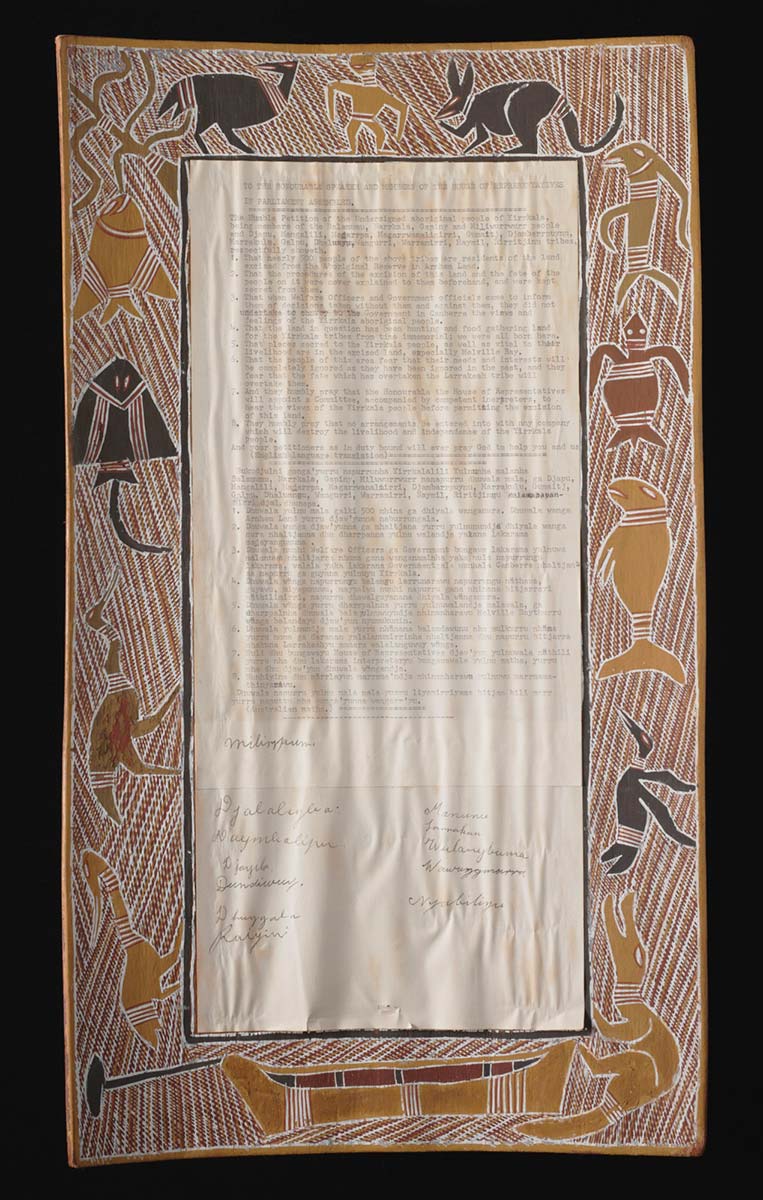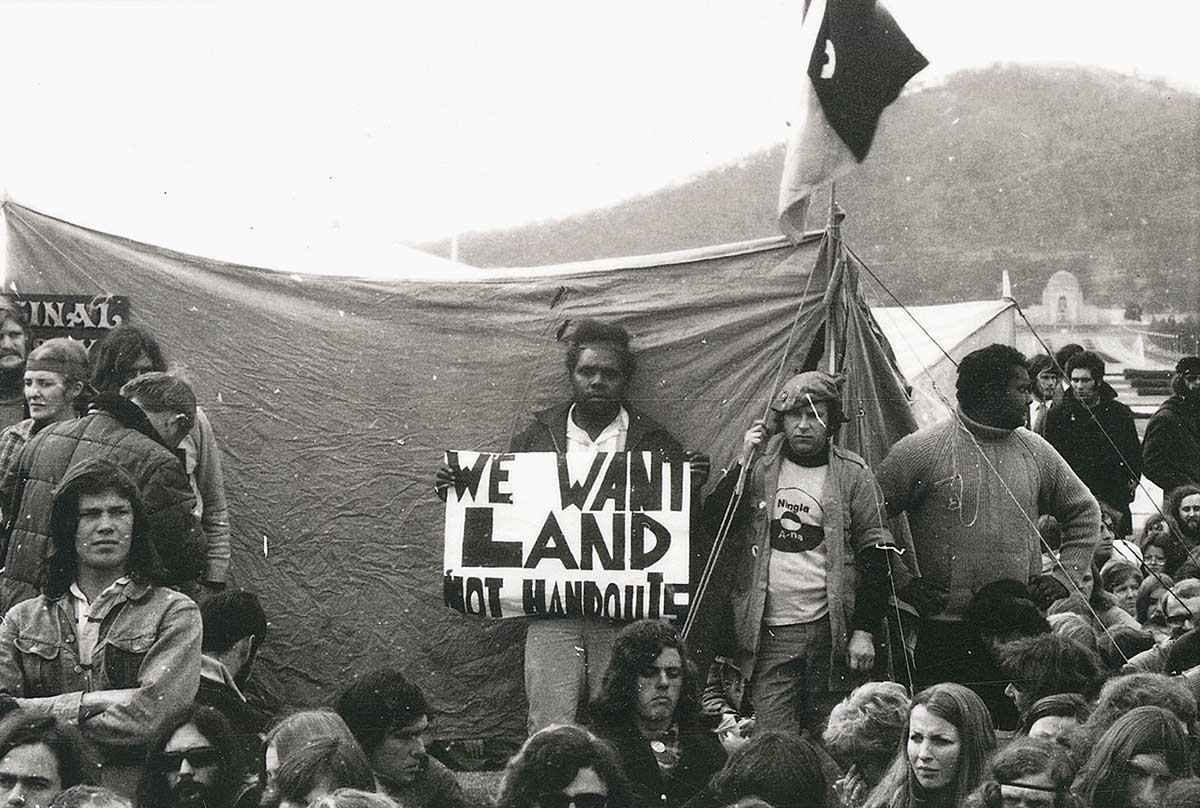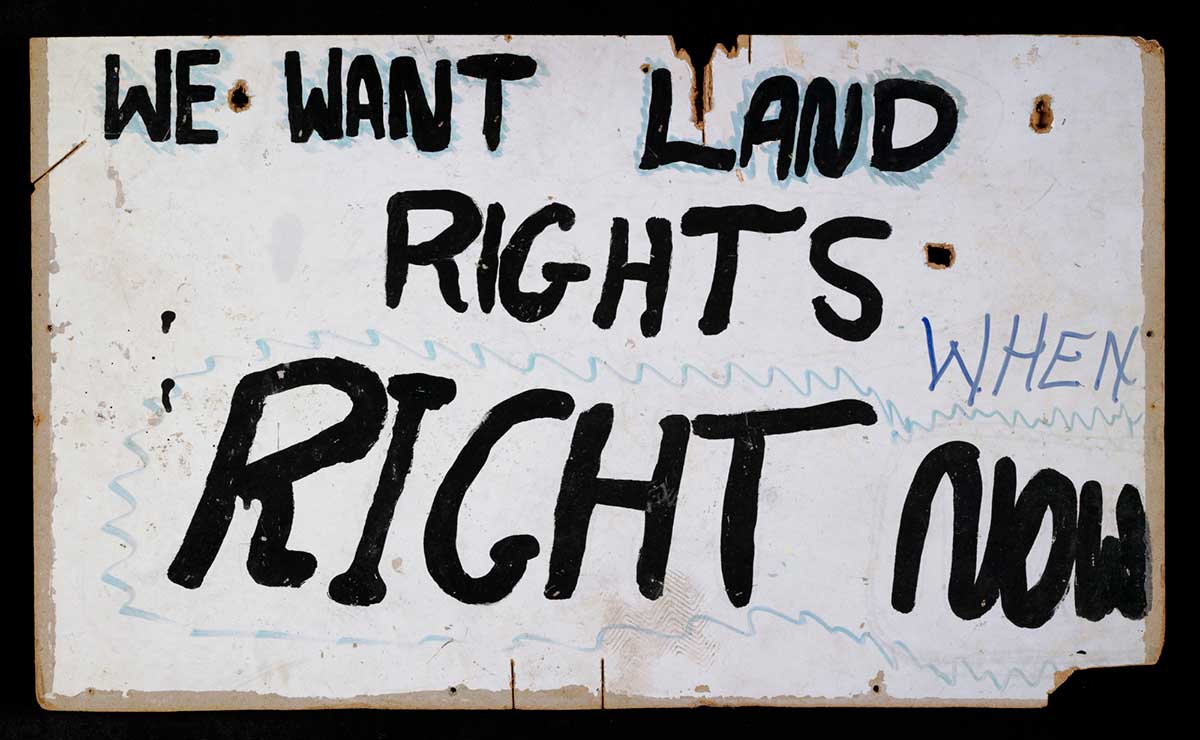In December 1976 the federal parliament passed the Aboriginal Land Rights (Northern Territory) Act. It was the first legislation in Australia that enabled First Nations peoples to claim land rights for Country where traditional ownership could be proven.
For almost 200 years First Nations peoples had been losing rights to their lands as white settlers encroached. This Act was the first step to enabling First Nations peoples to regain these rights.
The Government Resident of the Northern Territory, 1889:
After careful inquiry I am of the opinion that this is the attitude of the [A]borigines towards Europeans: Entrance into their country is an act of invasion.
John Bugi Bugi, Muran, 2015:
Every part of Australia – had a name and use and belonged to someone.
Colonisation of Australia
First Nations people’s rights to land have been challenged ever since the British arrived to occupy the Australian continent. Despite resisting the occupation, many communities were no longer able to live on Country.
In the Northern Territory the occupation was largely through pastoral leases and many communities managed to retain connection to Country through pastoral work, although conditions on the worst stations meant that Aboriginal workers were treated little better than slave labour.

Pushing for land rights
In 1963 the federal government announced, with no consultation with Yolngu people, that it would excise a portion of their homeland in north-east Arnhem Land for the construction of a bauxite mine.
The Yolngu sent a bark petition to the House of Representatives insisting that their land rights be respected. The government initiated an inquiry but ultimately disregarded the Yolngu’s requests and the mine went ahead.
In 1966 the Gurindji people at Wave Hill cattle station in the Northern Territory went on strike, demanding an increase in wages and the return of a portion of their homelands from the lessees (Vestey Brothers). In the first year of the strike, the Gurindji moved 20 kilometres from the cattle station settlement back to their traditional country at Daguragu.
The move highlighted a symbolic shift away from demands around wages and working conditions to a focus on the Gurindji’s need to control their homelands again.
Their struggle went on for nine years during which time the Gurindji and their supporters campaigned tirelessly around the country, bringing the issue of Aboriginal land rights to the fore of the public agenda.
Woodward Commission
Eventually, as part of its successful 1972 federal election campaign, the Labor Party made Aboriginal land rights part of its platform. Labor leader Gough Whitlam said at the launch of the campaign: ‘We will legislate to give Aboriginal land rights – because all of us as Australians are diminished while the Aborigines are denied their rightful place in this nation’.
This was in stark contrast to the previous coalition government, which in January 1972, announced the implementation of a system of 50-year general purpose leases to First Nations communities for Country that First Nations peoples considered to be their traditional homelands.
This decision led to the wave of action by Indigenous rights protesters and the establishment of the Aboriginal Tent Embassy in Canberra.
The Labor Party was elected and in 1973 Prime Minister Whitlam appointed Mr Justice Woodward to investigate suitable ways to recognise Aboriginal land rights in the Northern Territory.
In April 1974 Justice Woodward handed down the final report of the Aboriginal Land Rights Commission, which recommended ‘the provision of some basic compensation in the form of land for those Aborigines who have been irrevocably deprived of the rights and interests which would otherwise have been inherited from their ancestors’.
The commission recommended procedures for First Nations peoples to claim land and that such property should be held under inalienable freehold title whereby it could not be acquired, sold, mortgaged or disposed of in any way – and insisted that mining and other development should only take place on First Nations land with the consent of First Nations landowners.
Land Rights Act 1976
In mid-1975 the Whitlam government had introduced legislation to parliament based extensively on Woodward’s recommendations. However, before the Bill could be passed the government was dismissed in the November 1975 constitutional crisis.
The December 1975 election brought the Malcolm Fraser led Coalition to power with a landslide victory. Fortunately, the new government had promised to continue the push for Aboriginal land rights.
In December 1976 the Aboriginal Land Rights (Northern Territory) Act was passed with historic bipartisan support. It was the first legislation that allowed for First Nations peoples to claim land title if traditional association could be proven.
Four land councils were established under the Act:
- the Central Land Council, responsible for the southern half of the Northern Territory
- the Northern Land Council, responsible for the northern half of the territory
- the Tiwi Land Council, responsible for Bathurst and Melville Islands
- the Anindilyakwa Land Council, responsible for Groote Eyland and Bickerton Island.
Currently, about 50 per cent of the Northern Territory and 85 per cent of its coastline is recognised as being owned by First Nations groups.
In our collection
Explore Defining Moments
References
Nicolas Peterson, Aboriginal Land Rights: A Handbook, Australian Institute of Aboriginal Studies, Canberra, 1981.
Nicolas Peterson and Marcia Langton, Aborigines, Land and Land Rights, Australian Institute of Aboriginal Studies, Canberra, 1983.
Jessica K Weir (ed), Country, Native Title and Ecology, ANU Press, Canberra, 2012.

